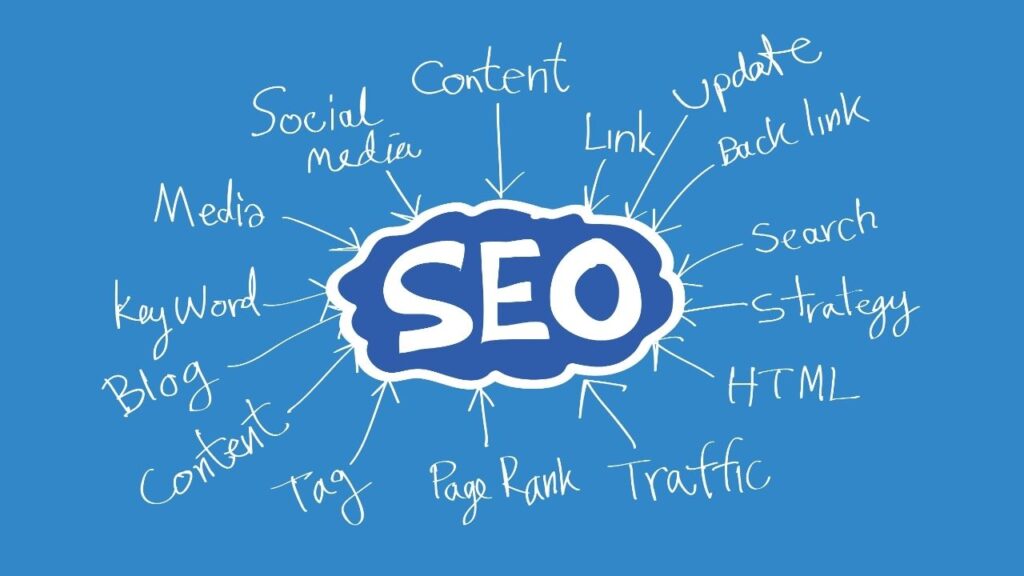What is SEO?
Search Engine Optimization (SEO) refers to the practice of creating content web content to rank as highly as possible. It’s an essential tool when building brand equity. Well-crafted web pages boost page views, and those page views can increase traffic— effective optimization compounds on itself. Search engine users will most often click on the first handful of results. The likelihood of a user clicking on a page diminishes considerably the further down the ranking it is; second page search results drop dramatically in terms of clicks.
It’s why brands put resources into appearing as high on a particular search result page as possible . This means targeting industry-specific key words or phrases to reach a wider audience. For example, a company that manufacturers running shoes would target the term “running shoe” but also broader searches like“running.” Queries like “what is the best running shoe?” are also important. Appearing at the top of common, relevant searches means more traffic and more opportunities to sell to new customers.
How Do Established Brands Use SEO?
SEO best practices work these rules to the brand’s advantage. Ideally, brands want to be the first result for relevant search terms: position zero. “Position Zero” is the label given to the top search term that Google displays along with a section of text. Although position zero is the ideal ranking, landing on the first page of results for common terms is considered a success. But optimizing web content to hit these rankings is more than just using the correct keywords. This is because user experience and traffic is weighted so highly. That means keeping pages up-to-date with the latest information, and constantly revisiting pages to ensure they stay at the top. A high-ranking web page won’t be there long if it’s never updated.
Established brands have a much easier time utilizing SEO: consider the search term “what is the best running shoe?” mentioned earlier. A global company like Nike will naturally appear high on that list: they have millions of monthly visitors visiting their site. Companies with high brand recognition can continue to grow that audience and drive traffic to specific pages. They need to pay close attention to their search engine rankings and data to stay at the top, but they’re already on the front page.
What Does Work?
Creating engaging content needs to be the top priority for all new brands. This can take the form of blog posts and video content. But it can also be polls that spark discussion on Twitter or interesting pictures on Instagram. Brands need to take the following steps to position themselves for success.
Understand the Audience
Brands must define their specific audience. Are they young women plugged into TikTok or older men who may occasionally use Facebook? Do they want funny memes or long-form, informative videos? While brands may intrinsically have the answers to some of these questions, now is the time to experiment with content to find the rest of these answers. Experiment with different social media platforms and content types, and double-down on what delivers the best results.
Make Shareable Content
Learn what these customers like to share. Surprisingly, this doesn’t always overlap with their needs. While a customer may click on a link to a marathoner breaking a new record, they might not find it compelling enough to share. If this imaginary running shoe brand’s audience prefers to share funny posts about things that only other runners would understand, the brand should lean into that. Creating shareable posts means viral potential for the brand. That means more followers, which means more potential for traffic, and that is what new brands need.
Maximize Social Media Presence
Start with the major players (Facebook, Instagram, LinkedIn, and Twitter) and see where this audience tends to “live.” Interact with them, share links, and but also use these platforms to drive traffic to the site. Share store pages and sales, blog posts, and videos. This creates a digital ecosystem that, as traffic to social media and website pages increases, will continue to feed into itself.
Pair These Practices with a SEM Strategy
Search Engine Marketing (or SEM) is the fastest, most effective way to drive traffic and increase search engine rankings. It’s the practice of paying for Google ads that will appear at the top of specific search pages. It means that results are virtually immediate, generating traffic for specific keywords. More importantly, SEM ensures new brands have the right kind of traffic on their sites: users searching for these terms likely have an active need for that particular product or service.
Looking to launch your SEO and SEM strategy? We’d love to help!
